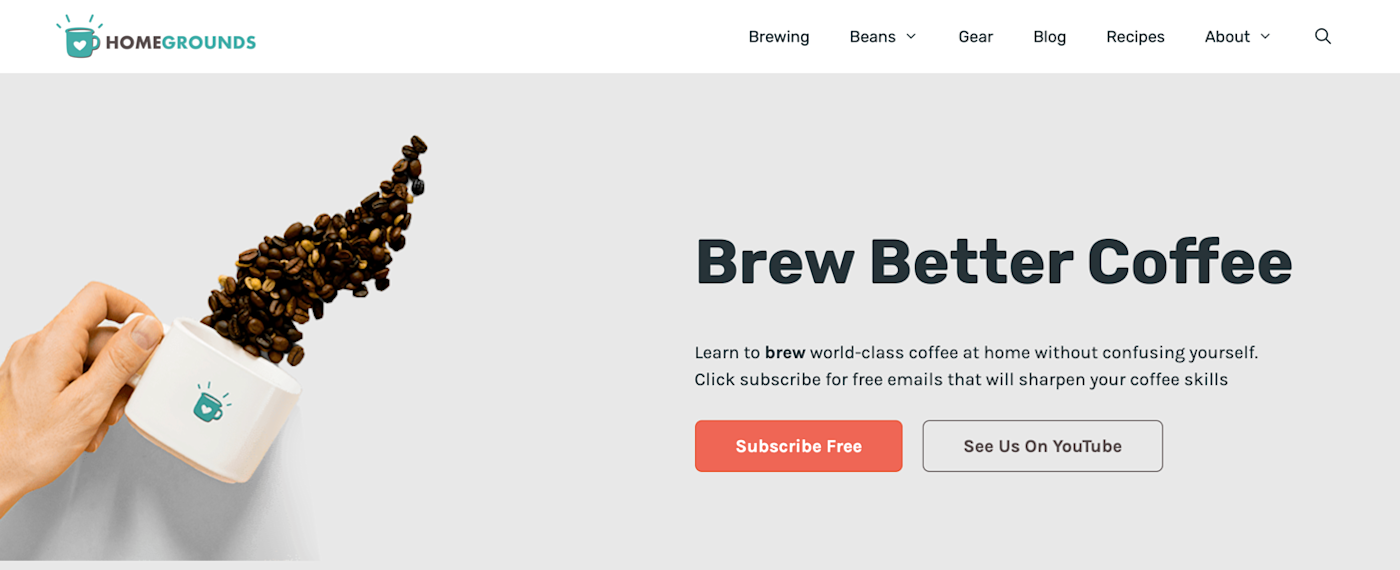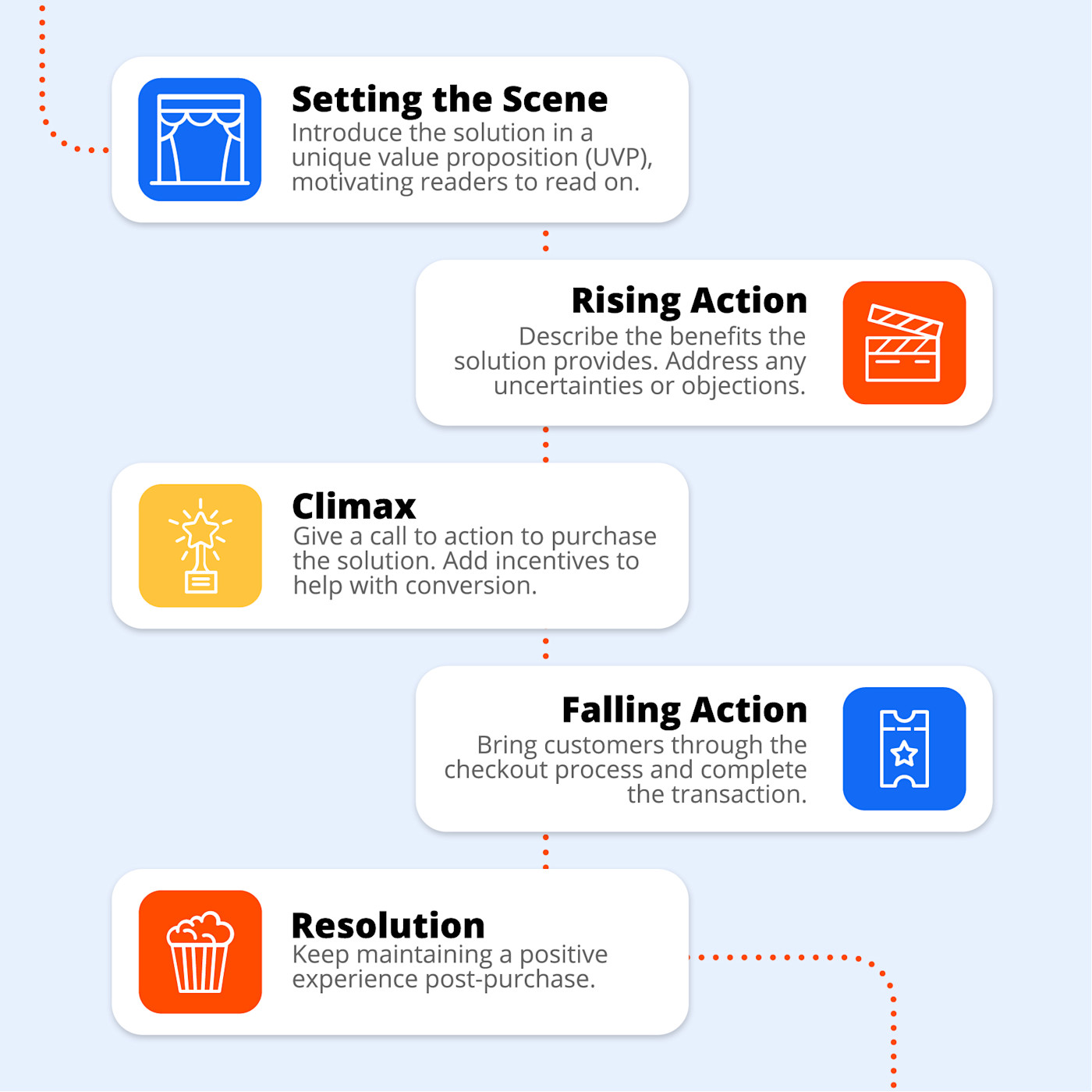If you're not using story in marketing your business, you're missing out on a big competitive advantage.
In March 2021, Wynter hosted a conference on the importance of storybranding. After the event, I had a chance to speak with Peep Laja, Wynter's CEO. In our conversation, he told me that there are only two ways businesses can compete in the crowded marketplace today: on innovation or on brand.
Most companies don't compete on true innovation, he said. Even when a company brings something truly innovative to the market, they only have a few years before other companies catch up to them. That leaves competing on brand as the best way for a business to set themselves apart.
Every company can compete on brand, no matter how big or small. The way they can do this best? Through story.
Let's start with an example.
One brand's story
SecurityNerd began as a problem needing a solution.
Years ago, when founder, Kristen Bolig, moved to North Carolina, she found herself living in a new house that didn't have an integrated home security system.
Kristen's need for a security system intensified when, about a month later, her husband left on an extended business trip. Concerned about being alone in her new home for the first time, Kristen had security at the forefront of her mind when a salesman knocked on her door selling—you guessed it—whole-house security systems.
Seeing the solution before her, Kristen immediately signed up for a two-year contract and bought all the add-on features the company designated as necessary.
Months later, though, when Kristen did her own research on the price and features of different security systems in the marketplace, she found she was paying way too much and had bought features she didn't really need. She also found that many of her friends were unknowingly locked into similar security system contracts.
Determined to demystify home security for the public, Kristen launched SecurityNerd to help readers understand what they needed before they committed themselves to contracts and fees.
Make your story immersive
So that's a good story—but why?
Because it's immersive.
According to Contently's Joe Lazauskas, immersion looms large when creating a brand story. In their excellent book, The Storytelling Edge, Lazauskas and co-author Shane Snow say that to build immersion in story, you need the following:
Relatability. Give people something they're familiar with already, something they can relate to or be empathetic toward.
Novelty. Create something unique and unexpected.
Fluency. Speak your readers' language. Use language they can understand, can relate to, and are comfortable with.
Tension. Bring in some sort of conflict, possibly between their current state and where they want to be.
Good immersive stories are an advantage because they engage our customers' emotional and neurological systems. According to this article from Harvard Business, when we engage with a good story, our brains fire up not just our language processing centers (which is expected) but also parts of the brain that are typically engaged when we are actively experiencing life events.
All of this leads to more engagement and potentially more purchases. At the Wynter conference on storybranding, psychologist Stephanie Jiroch quotes Headstream to drive this home: "If people love a brand story, they are 55% more likely to buy the product being sold (in the future), 44% more likely to share that story with others, and 15% more likely to purchase immediately."
So how do brands get started with storytelling?
Peep told me: "With storytelling, it's hard to make people believe something they don't already believe. So a really good place to start with storytelling is to identify a story that they already believe, and then shine light on it."
In a LinkedIn post, Peep cites the following as some archetypal stories brands use to communicate their message (plus some examples from both me and Peep):
David against Goliath (HEY competing against Gmail)
Disruptors of convention (Fast's one-click check out)
Heroic, righting a common wrong done to customers (Wise)
Givers of something usually reserved for elites (Robinhood)
Social benefactors (TOMS)
Rebels, making light of things usually taken serious (Suitsupply)
Traditionalists, hearkening back to better times (Hiut Denim Co.)
Authentic, non-corporate, down-to-earth (Basecamp)
Futurists, visionaries of what is to come (Boston Dynamics)
Replacements for the old way of doing things (Tesla)
Start with one of those archetypal stories, and then decide which category your story falls under.
The 3 main categories of brand stories
There are three ways that businesses tend to use storytelling:
Customer-led stories
Product-led stories
Company-led stories
One thing to remember as you craft your story is that you can tell a story in just a few words. Yes, channels like blog posts, videos, and webinars can give you more opportunity to craft a full narrative in the traditional sense. But don't limit your storytelling to long-form content. You can tell a story in just a few words, or even just visually.
Customer-led stories
In his book, Storybranding, Donald Miller talks about using the hero's journey as a framework to make the customer the hero of your story. He shows how to set up a story focusing on the customer as character and the brand as guide:
"A CHARACTER who wants something encounters a PROBLEM … A GUIDE steps into their lives, gives them a PLAN, and CALLS THEM TO ACTION … [which] helps them avoid FAILURE and reach SUCCESS."
As an example, take a look at Home Grounds.

Home Grounds immediately lays out their value proposition as a benefit to the customer ("Brew better coffee"). Implied in this benefit is the problem the customer is trying to solve ("My home-brewed coffee isn't great"). Also implied is that Home Grounds will act as a guide to help the customer find the solution to their problem.
Notice Home Grounds doesn't talk about itself here at all but just gives the customer a synopsis of the story. Here's the hero's journey again, but this time with Home Grounds' story in parentheses:
"A CHARACTER (the customer) who wants something (good coffee at home) encounters a PROBLEM (their home-brewed coffee isn't great)… A GUIDE (Home Grounds) steps into their lives, gives them a PLAN (their free emails), and CALLS THEM TO ACTION (subscribe now!) … [which] helps them avoid FAILURE (bad coffee) and reach SUCCESS (good coffee)."
Product-led stories
In product-led stories, the product is at the center of the story—the focus is on how a given product (or service) can solve a problem. This is often demonstrated through customer stories, case studies, and other social proof. "See? Our product helps people."
Momoko Price, in her excellent course on product messaging at CXL, uses a similar trick as Donald Miller did, but for product-led stories: she suggests using narrative structure for page flow. The typical plot structure of a story includes setting the scene (or exposition), rising action, climax, falling action, and resolution. Here's how you'd apply that structure to a sales page to tell a story:

Company-led stories
The danger of leading with a company-led story is that it takes the focus away from the customer and the product—the two things most important to your business. But origin stories or company stories aren't completely inappropriate or ineffective in marketing; they just need to be aligned with the product or customer story as well.
For example, the reason the SecurityNerd story works doesn't have to do so much with how SecurityNerd started, but with what SecurityNerd represents: knowledge and empowerment to make the right purchase. In this way, SecurityNerd positions itself as the ultimate guide to the customer, even through the telling of its own origin story.
Differentiate your brand story
At the Wynter conference, psychologist Stephanie Jiroch notes that a successful brand story "helps you stand out in a sea of sameness." In my interview with Peep, he stressed this need for a differentiation strategy in storytelling. The problem with using stories without differentiation, he said, is that all stories start sounding the same.
Practically speaking, a customer isn't just looking at one brand when they're shopping for a solution. You can't have your story blending in with your competitors'. So make sure your story stands out. You have a unique selling point—make sure people know what it is.





